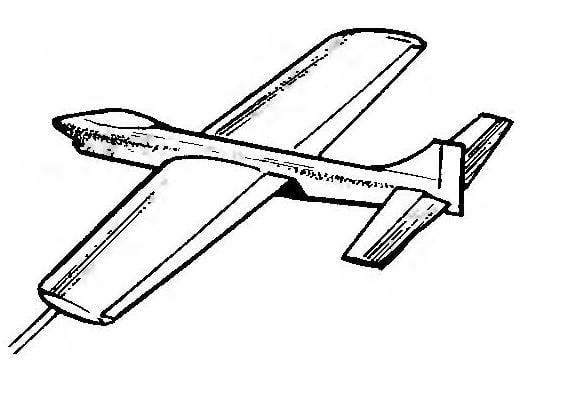 The first control line aerobatic models that use the engine capacity of 3.5 — 7 cm3 modelers-athlete transferring from Junior level to senior championship… What it be? Youth as the original sample often chooses superprotein equipment of the world Champions or Europe and tries to copy it. In the absence of speciliaties on the model put serial domestic motor and… due to ignorance of technical and technological methods such copy get poor results and wasting time. The other extreme — a massive increase in checked malakhovich models. So there are “pilotazhki” with mediocre flight characteristics that don’t bring any sporting success.
The first control line aerobatic models that use the engine capacity of 3.5 — 7 cm3 modelers-athlete transferring from Junior level to senior championship… What it be? Youth as the original sample often chooses superprotein equipment of the world Champions or Europe and tries to copy it. In the absence of speciliaties on the model put serial domestic motor and… due to ignorance of technical and technological methods such copy get poor results and wasting time. The other extreme — a massive increase in checked malakhovich models. So there are “pilotazhki” with mediocre flight characteristics that don’t bring any sporting success.
This publication presents a classic aerobatic model, simple in design and is designed specifically for the installation of the engine capacity of 3.5 — 7,2 cm3. In its design has taken into account the modest capabilities of asiacruise of the district level suit. The main materials used in the manufacture, the most common are pine slats, birch plywood, foam. The entire power frame is assembled on epoxy resin. To plant great upgraded motor “Comet-5A” or TC-4. It is possible to use motors of the type MDS-3,5 in aviagarant and MDS-25 with a working volume of 4.07 cm3. “Preteena” version of the model will be “rainbow-7” or “Talka-7”.
The fuselage is assembled from two symmetrical trusses-sidewalls. Each of them is glued together from strips and plywood security walls, which in the connection area of the wing to the fuselage strengthened by overlays. Cross set two frames and two polosamota of plywood. The tail part of the farm is connected by rails-spacers. The upper part of the fuselage fairing is a cut out of a foam type PS-4-40 melkosortnogo or packaging, and are covered with a thin Kraft paper on the casein or carpenter’s glue. PVA glue we used because it leaves streaks that are hard deleted. The rear part of the simulation of the cockpit canopy is cut from the packing foam and glued paper as well as the fairing. The fuel tank classic brazed steel, with additional internal wall. Tank volume — 100— 130 cm3. The hood the engine compartment is laminated of two layers of fiberglass with a thickness of 0,08 mm.
